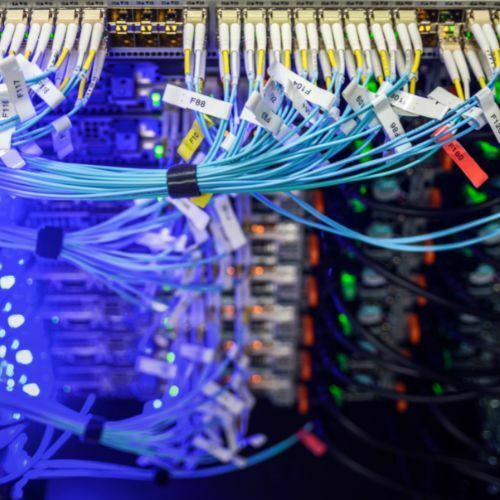
A hardware asset is a term that’s used to describe a physical asset that a business may have. Using hardware asset management can help businesses to locate and maintain their assets.

What Exactly is the Hardware Asset Management Life Cycle?
The management of hardware assets covers the whole life of every asset. The hardware asset management lifecycle can have about six different parts. These parts are:
- Request – This part of the life cycle refers to the request for the need of hardware.
- Fulfil – As soon as the request has been granted, the order for the asset can be fulfilled.
- Deploy – Hardware assets can now be deployed and put to use. Employees can potentially check the assets in and out while also establishing acceptable use policies.
- Monitor – This stage of the asset’s life cycle revolves around management keeping a close eye on the assets. This can help to reduce security risks and prevent hardware from becoming outdated.
- Service – Regular maintenance is usually required for all types of assets. The service stage of a hardware asset involves just this. If an asset is damaged, it may need to be reassigned or even recycled.
- Retire – When an asset has reached the end of its life cycle or is damaged beyond repair, the final stage involves retiring it. When an asset is retired, management can work to replace it.
Implementing an effective hardware asset management audit checklist ensures businesses can track each phase of their assets’ lifecycle, reducing the risks of loss and inefficiency. For a deeper understanding of what hardware asset management (HAM) is and how it works, check out this comprehensive guide: What Is HAM.
The life cycle of each asset can seem a little complicated. However, when the right hardware lifecycle management software is used, it can seem less so. Itemit’s IT hardware asset management software can ensure that assets are maintained throughout the lifecycle. Additionally, assets can potentially prove to be even more useful to businesses. This is because they can work more efficiently than ever before.
Common Hardware Asset Management Challenges
Businesses implementing the hardware asset management lifecycle often face challenges such as:
- Ghost assets – These are untracked or misplaced assets that somehow remain in the company’s financial accounts.
- Security risks – Assets that are not monitored may result in exposure of confidential information.
- Compliance concerns – Various industries have specific compliance regulations that demand proper asset management.
- High replacement costs – With no regular checks and balances in place and tracking controls, hardware gets replaced more often than what is necessary.
To deal with these challenges, businesses have to implement best practices, such as a hardware asset management audit checklist and using automated tracking solutions like asset tracking software for better visibility.
In addition, discover how Itemit`s asset tracking software can help businesses efficiently monitor, manage, and optimise their hardware assets with real-time tracking and automation.
The Benefits of Using Management Software
There are many benefits to using management software. Some of these benefits can be found below:
Helps to Prevent Loss
When QR Codes are added or assigned to each asset, they help to prevent loss. This is a result of all assets being tracked. Users of the management software can locate the hardware at all times.
Implementing trustworthy hardware lifecycle management software allows companies to monitor assets in real time, which minimises the chances of lost or stolen equipment. This kind of tracking is equally important for IT assets, where opportunities for security breaches may exist due to unattended hardware.
Additionally, there will be fewer ghost assets to deal with. Assets that are misplaced can be tracked to the last-known location. Assets that are damaged and have been set aside can be repaired or replaced. Not only does this mean that fewer assets are lost, but it means fewer assets need to be replaced.
Can Boost Productivity
When damaged assets are repaired or replaced, employees have more equipment to work with. As a result, productivity can be increased. More employees will have the tools they need to undertake their tasks. Deadlines are more likely to be met, and sales can increase. This is good news for any business.
Moreover, a clear hardware lifecycle management plan allows a company to think about the future. By watching how each asset is performing, organisations can foresee when maintenance will be needed and address it before outages occur, which results in higher workflow efficiency.
Optimises Usage
itemit’s hardware asset management tool helps to optimise usage. Assets can be checked in and out, and employees will automatically feel more responsible for them. In addition to this, upgrade and maintenance schedules can become more organised. This ensures that more assets will be working to the potential they were designed for.
Furthermore, by utilising IT hardware asset management software, businesses can track software compatibility, ensuring that business IT hardware runs optimally without any unnecessary slowdowns or system failures.
Offers Longevity
Using asset management software ensures that more assets have increased longevity. Management will have access to the asset’s purchase history, insurance and warranty details, current ownership, current user, etc. With this information, management can make better-informed decisions about maintaining, updating, and replacing assets. This in itself can increase each asset’s longevity.
Hence, integrating hardware lifecycle management software into company operations on a daily basis enables the organisation to monitor an asset’s status, alert when it is time for an upgrade, and even strategically schedule replacements instead of merely responding to failures.

How the Right Software Can Reduce Costs
The right hardware asset management tool can help to reduce costs. When more assets are being used as they’re in a good state of repair costs can be reduced. There will be no need to replace quite as many assets as the current assets will be looked after. Setting up frequent maintenance and updating schedules ensures that costs are kept to a minimum. It also ensures that any potential issues can be found and rectified.
With an effective hardware asset management audit checklist, businesses can standardise asset tracking, reduce unnecessary purchases, and ensure compliance with company policies – ultimately strengthening their hardware asset management lifecycle for long-term success. This leads to better budget control and cost savings.
When maintenance costs are lowered and fewer assets need to be replaced, businesses can save money. As a result, the funds can be used in another department, used to buy more assets. Alternatively, funds can simply be put to one side until they’re required.
How to Choose the Right Hardware Asset Management Software
Choosing the best software for managing your business’s physical assets is crucial. The right system not only improves asset tracking but also increases overall productivity, minimises losses, and guarantees adherence to various industry requirements. However, before selecting a solution with many choices out there, companies must look at their specific needs first. The following are the main aspects that should be evaluated when selecting software for hardware lifecycle management.
1. Scalability: Growing with Your Business Needs
Companies must go for solutions that have the potential for expansion. While a startup with a few IT assets may need a simple asset management system, a large enterprise with thousands of devices would need advanced features like automated reporting, real-time tracking, and multi-user access.
- Will the program allow for an increase in the number of assets managed over time?
- Is there support for multiple locations if your business expands?
- Does it integrate with the existing business management tools as new ones are added?
A hardware lifecycle management software that prioritises scalability ensures that businesses do not have to change systems in order to accommodate their growing asset portfolio.
2. Integration Capabilities: Ensuring Seamless Connectivity
The best IT hardware asset management software should integrate with other critical business systems. Compatibility with ERP (Enterprise Resource Planning), CMMS (Computerized Maintenance Management Systems), and accounting tools ensures smoother workflows and data accuracy.
- Is your current IT Infrastructure compatible with the software?
- Is there a capability to sync with accounting packages to manage finances?
- Are APIs available to support integrations with custom business systems?
Integration fosters efficiency in an organisation by ensuring that asset-related information can be accessed in different departments with minimum duplication or manual entry errors.
3. Automation: Reducing Manual Work and Human Errors
The automation in tracking assets decreases the chance of human error and time spent on manual audits. The proper asset management software should provide:
- Automated asset tagging using QR codes, RFID, or barcodes to simplify asset check-in/check-out.
- Automated alerts and notifications for maintenance, updates, and replacements.
- Scheduled reports to analyse asset usage, depreciation, and performance trends.
With automations, businesses can avert unforeseen downtime and control their asset lifecycle actively.
4. Remote Accessibility: Cloud vs. On-Premise Solutions
Cloud-based hardware asset management software allows companies to access their assets from anywhere, which proves to be useful for remote and multi-location businesses.
- Cloud solutions provide instant access to asset information as there are no manual updates required.
- Companies bound by strict security protocols or require the handling of extremely sensitive data may favour on-premise solutions.
- Mobile app integration is critical for teams that need to manage assets while on the move.
Businesses operating on a hybrid work model can benefit from cloud-based asset-tracking software that enables the monitoring of assets without needing employees to be physically present at company locations.

5. Security and Compliance: Protecting Sensitive Data
Hardware assets often contain confidential business data. Whether it’s laptops, servers, or mobile devices, ensuring security is non-negotiable. A hardware asset management system should include:
- User authentication and access control to limit unauthorised access.
- Encryption protocols to protect sensitive data stored on or accessed through the system.
- Compliance support for industry standards like GDPR, ISO 27001, and SOX.
Companies that operate in healthcare, finance, and even government need compliance-driven IT hardware asset management software to comply with certain regulations.
6. Reporting and Analytics: Leveraging Data for Smarter Decisions
One of the biggest advantages of hardware lifecycle management software is its ability to generate insights from asset data. Advanced solutions offer:
- Customisable reports on asset utilisation, maintenance history, and depreciation.
- Predictive analytics for forecasting asset replacement needs.
- Cost tracking features to analyse total cost of ownership (TCO).
A robust reporting system enables businesses to optimise hardware investments and prevent unnecessary spending on replacements.
7. User-Friendly Interface: Enhancing Adoption Across Teams
Even the most advanced hardware asset management software is ineffective if it’s too complicated for employees to use. Businesses should look for:
- An intuitive interface that requires minimal training.
- Mobile-friendly design for teams managing assets on the go.
- Role-based access so employees only see relevant asset data.
A well-designed system ensures smooth adoption across departments, from IT teams to finance and operations.
8. Support and Training: Ensuring a Smooth Transition
No matter how good a system is, businesses need proper support and training to make the most of it. When evaluating hardware asset lifecycle solutions, consider:
- Does the vendor offer live support or only email/chat assistance?
- Are there training materials (guides, webinars, videos) to help teams onboard?
- How frequently does the software receive updates and feature enhancements?
A provider that offers strong customer support ensures that your asset management system remains functional and efficient over time.
Final Considerations: Making the Right Choice
Selecting the right hardware asset management lifecycle software isn’t just about tracking assets – it’s about improving efficiency, cutting costs, and ensuring operational security. By carefully evaluating software based on scalability, integration, automation, security, and user-friendliness, businesses can choose a solution that supports their long-term growth.
Use itemit’s Hardware Asset Management Tools
There are so many benefits associated with using itemit’s asset management tools. Managing hardware can potentially be quite difficult if hardware assets are not tracked. Using the right tools can make a huge difference to businesses of all shapes and sizes.
itemit’s hardware asset management tools can make life so much easier. Regardless of what type of business you run, itemit can help. Contact our friendly team today at team@itemit.com so you can learn how well itemit can work for you. Alternatively, you could sign up for a 14-day Free Trial so you can start benefiting from itemit’s features very soon.

Try itemit
Choose a better way to track your assets. Start your free 14-day trial now!

Keep Learning
itemit Blog
Tips, guides, industry best practices, and news.
Benefits of Vendor Managed Inventory for Your Business
Learn how Vendor Managed Inventory (VMI) can streamline your supply chain. Explore the key benefits and how it helps optimize inventory management.
The Key to Asset Reliability: Preventive Maintenance and Real-Time Tracking
Enhance asset reliability with preventive maintenance and real-time tracking. Reduce downtime, improve efficiency, and extend asset lifespan with smart strategies.
Optimising Asset Performance Management: Strategies for Maximum Efficiency
Explore practical strategies to optimise asset performance management, maximise efficiency, and enhance productivity with predictive and real-time monitoring tools.



